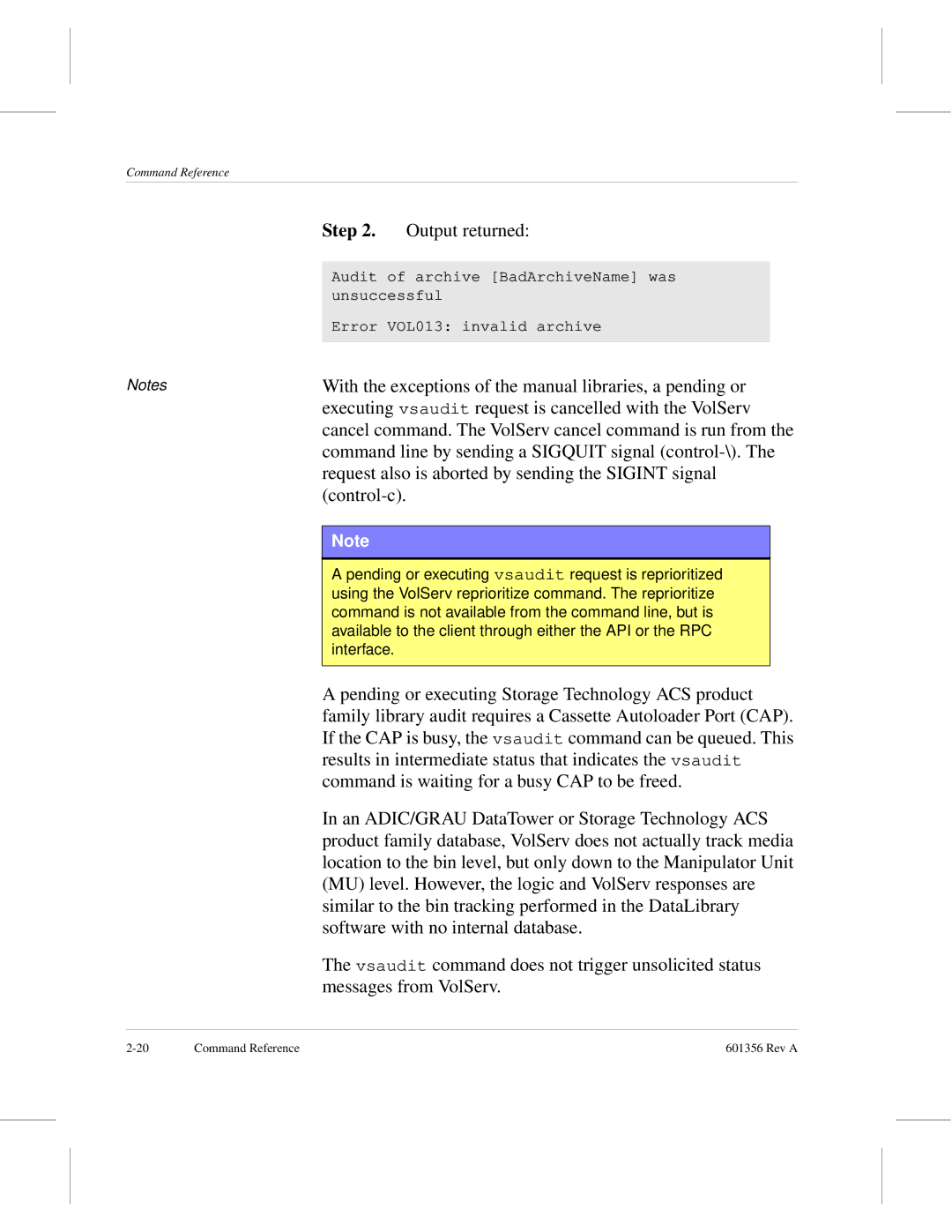
Command Reference
| Step 2. Output returned: | |
|
|
|
| Audit of archive [BadArchiveName] was |
|
| unsuccessful |
|
| Error VOL013: invalid archive |
|
|
|
|
Notes | With the exceptions of the manual libraries, a pending or | |
| executing vsaudit request is cancelled with the VolServ | |
| cancel command. The VolServ cancel command is run from the | |
| command line by sending a SIGQUIT signal | |
| request also is aborted by sending the SIGINT signal | |
|
| |
|
|
|
| Note |
|
|
|
|
| A pending or executing vsaudit request is reprioritized |
|
| using the VolServ reprioritize command. The reprioritize |
|
| command is not available from the command line, but is |
|
| available to the client through either the API or the RPC |
|
| interface. |
|
|
|
|
| A pending or executing Storage Technology ACS product | |
| family library audit requires a Cassette Autoloader Port (CAP). | |
| If the CAP is busy, the vsaudit command can be queued. This | |
| results in intermediate status that indicates the vsaudit | |
| command is waiting for a busy CAP to be freed. | |
| In an ADIC/GRAU DataTower or Storage Technology ACS | |
| product family database, VolServ does not actually track media | |
| location to the bin level, but only down to the Manipulator Unit | |
| (MU) level. However, the logic and VolServ responses are | |
| similar to the bin tracking performed in the DataLibrary | |
| software with no internal database. | |
| The vsaudit command does not trigger unsolicited status | |
| messages from VolServ. | |
Command Reference | 601356 Rev A |
